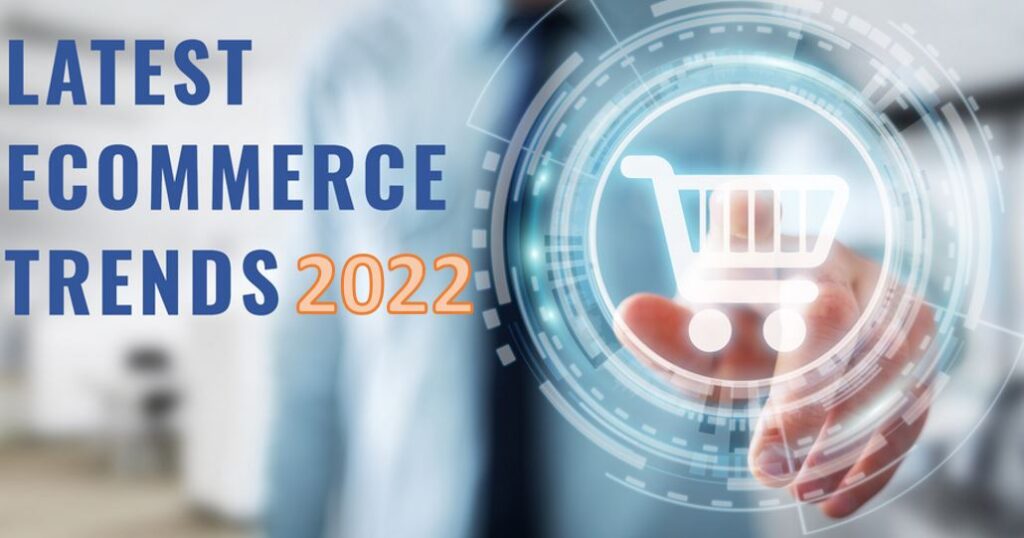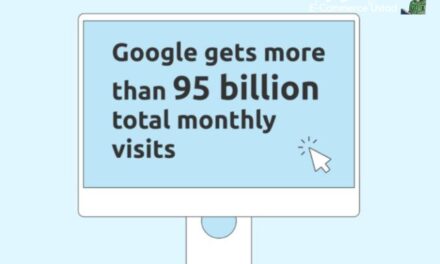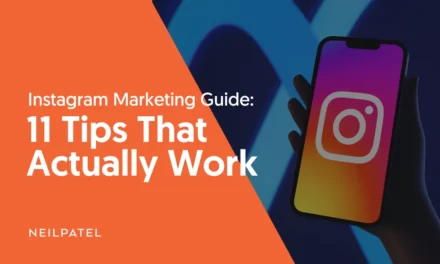
14 Ecommerce Trends Leading the Way


14 Ecommerce Trends Leading the Way : Leaders in the field shared a wealth of information with us as we discussed the developments taking place this year. Let’s take a look at the current direction of e-commerce by investigating the most prominent trends.
1. Using AR, online purchasing becomes more lifelike.
2. Voice-activated searches will increase in popularity.
3. In-store AI helps businesses better understand their customers.
4. Such data is used in real-world personalization to tailor each interaction.
5. When it comes to tailoring user experiences, big data is crucial.
6. The use of chatbots has vastly improved the retail industry.
7. Mobile commerce is still expanding.
9. 8. Alternate payment options are available.
10. Continued creativity is enabled via headless and API-driven e-commerce.
11. Clients react to a video.
12. As a result of subscriptions, patronage is maintained.
13. The value of sustainable practices grows.
14. If a company wants to increase conversions, they need to focus on its digital strategy.
15. Commerce between businesses is expanding… and evolving.
1. Augmented reality enhances the reality of online shopping.
Augmented reality (AR) in online shopping has completely revolutionized the industry. Customers are better able to visualize the product they are purchasing with this technology. Some industries, like fashion and home décor, benefit greatly from AR since customers can get a greater feel for the item without really seeing it.
It will be interesting to see how things pan out in 2020 when Gartner predicts that 100 million people will shop using AR.
This forecast has the backing of Michael Prusich, Director of Business Development at 1Digital Agency:
35% of respondents say they would do more online shopping if they could virtually try on a product before buying it, and 22% say they would be less likely to visit a brick-and-mortar store if AR was offered through their preferred eCommerce website. With augmented reality, a user may view how an item would look on them in real life, as opposed to only in a 3D model. While conventional ways of purchasing may be more suited to certain products and businesses, augmented reality is set to cause a major shift in the retail industry very soon.
Additionally, efelle.com’s Director of Marketing & Partnerships Tessa Wuertz predicts that more and more small and medium-sized enterprises will follow suit:
We anticipate a dramatic increase in the use of augmented reality (AR) by businesses, to the point where it becomes the norm in e-commerce and social media. We’re seeing it used by bigger organizations for the time being, but I expect to see it used by enterprises of all sizes very soon.
2. There will be a growing volume of voice searches.
There has been an increase in the use of voice assistants, and not just because more people now own smart speakers. By 2025, Loop Ventures expects 75% of American homes to have an intelligent speaker.
Consumers will increasingly use voice search to conduct things like online shopping, food delivery, and time management as the number of households with smart speakers increases. In terms of keywords and content, the growing popularity of voice search presents an opening for online retailers.
In his article “2020 Trends to Watch,” David Zimmerman, Director of eCommerce Solutions at Kensium, predicted “greater participation of voice-enabled solutions in the commerce area with Amazon Alexa and Google Home.”
3. AI helps shops learn about shoppers.
In today’s world, automated, individualized shopper experiences are within reach thanks to the advancements in artificial intelligence (AI) and machine learning. Artificial intelligence is constantly gathering information about consumers’ shopping habits, purchasing patterns, and desired features. It’s an advanced piece of equipment that just can’t be duplicated in a retail setting.
The intricacy of AI and the potential to make it more human are becoming increasingly significant said Ron Smith, editor-in-chief of The Digital Outdoor.
People want to feel that brands are invested in them, and that’s how technology will be developed. Although this trend runs counter to what we’ve seen so far on social media (where AIs pick up on the negative things people say), I think it’s safe to say that customers will eventually want to see this happen. Soon, businesses may be able to teach bots to give people relief and products based on their moods, if the bots can learn to construct words that communicate emotion.
4. On-site personalization uses those insights to create individualized experiences.
All types of online shoppers, from B2C consumers to B2B professionals, want unique, individualized service. Personalized product recommendations and in-depth customer service are made possible by the data collected by AI.
One study found that businesses that scaled their sophisticated customization capabilities saw a 25% increase in revenue due to implementing individualized experiences on their websites and in their marketing campaigns.
In comparison, the 40% of organizations that were “developing fundamental personalization capabilities” had “a revenue lift of 10% or more” while only 19% of companies fell into the first category.
Freelance writer and e-commerce expert Kaleigh Moore predict a rise in the importance of AI-driven customization in the coming year:
To quote one of my favorite quotes: “As brands collect and analyze more data, they will be able to provide shoppers with highly personalized experiences.”
5. Big data plays a role in creating personalized experiences.
Many buyers today understand the dangers of giving out personal information on e-commerce platforms. This is why there is a lack of consensus amongst experts regarding the positive effects of big data on the individualized consumer experience.
Kensium Solutions’ Conversion Rate Optimization Expert Luis Catter has some ideas about how personalization will develop in the future in light of growing privacy concerns.
Eventually, customization will make its way to the IoT as digital firms continue to grow and bring more services in-house. We won’t just get recommendations on our phones or computers, but also our doorbell cameras and thermostats. But part of the legislation that is being implemented will allow us to opt-out of it. It will be intriguing to see the divide emerge between individuals who benefit from highly customized experiences and those who do not. The implications for our ability to attract new customers through advertising are intriguing.
6. Chatbots improve shopping experiences.
Chatbots engage online shoppers like salespeople. If they can’t find and buy a thing in a few clicks, today’s shoppers grow frustrated. Chatbots can preserve the sale here.
Experts expect 80% of firms to use chatbots by 2020.
Shane Barker, founder, and CEO of shanebarker.com/blog says:
Customer support chatbots are popular today. However, they’ll transform internet shopping. They’ll dominate marketing. Retailers will likely use self-checkout kiosks and expand in-store marketing.
Optimum7 CEO Duran Inci anticipates chatbots becoming more tailored to improve customer experience:
“Just as chatbots are becoming smarter, I imagine online personal shopping assistant bots will use previous data to predict new things you’ll enjoy. Like Amazon’s related product suggestions.”
7. Mobile shopping is still on the move.
Today, mobile purchasing is essential. You’ll miss major chances if your e-commerce site isn’t mobile-friendly or web-app-friendly. Mobile shoppers seek convenience and digital payment.
Statista predicted in 2019 that 73% of e-commerce purchases would occur on mobile devices by 2021.
Many expect 2020 to bring “better quality and more mobile payment integrations,” including Northern Commerce’s VP of Marketing, Corey Dubeau.
8. More ways to pay.
If a customer is unable to access the payment method of their choice on an e-commerce site, they may leave the purchase. Increasing conversion rates for mobile devices is as simple as providing several payment options. In addition, customers can speed up the checkout process by saving their credit card details on your site for future purchases.
One of 1Digital Agency’s top writers and account managers, Joe Chilson, predicts that centralized payment processing will make significant advancements in 2020 as well.
To illustrate, just picture how simple it would be to make a purchase on any website by providing only your unique identifier at checkout. Having this one-of-a-kind identifier would grant you access to a dependable online wallet service, where your personal data, including credit card details, shipping and billing addresses, and other such information, could be safely stored. Apple and PayPal have both tried their hands at this before, but I believe it has the potential to become the norm.
9. Headless and API-driven eCommerce allows continued innovation.
With the help of the headless commerce solution, the eCommerce platform powering an online shop may be totally separated from the frontend presentation layer.
Since headless allows for greater back-end flexibility, it is being used by a growing number of e-commerce enterprises. These businesses also benefit from the improved search engine optimization (SEO), content marketing, and digital experience that headless affords.
Antonio Kaleb, LARQ’s e-commerce architect, says, “With headless, we obtain more control over our content and consumer journey through checkout.” BigCommerce’s headless solution met our multi-regional requirements, and now we’ve consolidated all of our stores under one domain and added a custom functionality to make the shopping experience even better.
10. Customers respond to videos.
Shane Barker further emphasizes the importance:
“The importance of videos can’t be understated. Videos can help you explain and showcase your products better than images ever can. You should consider adding videos of your products in your e-commerce store.”
There are numerous types of subscriptions available now, and their ease is appealing to consumers. For businesses, subscription services allow them to prepare for inventory and sales that have already been secured.
David Zimmerman, Director of eCommerce Solutions at Kensium, thinks that “more enterprises will offer paid services or monthly payment choices for larger purchases” in the following year.
12. Sustainability is becoming more important.
Environmental consciousness is increasing among both consumers and corporations. As a result, people are becoming more cognizant of where they purchase and its environmental impact and related impacts.
According to a survey, fifty percent of respondents want greater sustainability in the fashion business, and seventy-five percent wanted less packaging.
Numerous firms are discovering ways to be more environmentally friendly by eliminating paper whenever possible, employing biodegradable packaging, and exploiting recyclable materials.
13. Businesses should optimize digital strategy for conversion.
Converting potential clients is a separate challenge from attracting them to your website. In 2020, firms will optimize their product pages to increase their conversion rates. Multi-channel selling is an additional method of generating conversions, whether through Facebook advertisements or Google shopping ads.
Scott Ginsberg, Metric Digital’s Head of Content, adds:
“An increasing number of brands vie for the same eyes. Facebook’s algorithm favors video and motion-based content that is more likely to rapidly engage an audience. Additionally, clients are more demanding, impatient, and inquisitive than ever before. Ensure that you comprehend the intricacies of Performance Ad Creative that not only looks great but also generates conversions. Utilizing these platforms smartly is the greatest approach to ensure that your company will stand out in the dynamic digital marketing environment.”
14. B2B is growing…and changing.
Do not be concerned that business-to-business (B2B) marketing will soon become obsolete. According to Statista, by 2021, global B2B e-commerce retail sales would have reached $1.1 trillion.
According to Forrester, Millennials will make up nearly half of all adults by 2020. This will lead to a rise in the number of Millennials making purchases from business to business. Both demographics prefer not to engage with salespeople in order to learn more about solutions to their problems.
There is an effort being made by B2B eCommerce firms to satisfy these requirements. This change is discussed by Connie Wong, Marketing Manager of Silk Software:
Orders placed exclusively via faxed order forms or over the phone are becoming a thing of the past. The benefits of providing customer service to clients over the internet are being recognized by an increasing number of companies. Teams are shifting away from spending the majority of their time processing orders sent via email spreadsheets or paper forms by automating these processes through their eCommerce site. Instead, they’re reorienting their efforts toward what really matters: “interacting with customers, delivering an exceptional customer experience, and building lasting client connections.”































Trackbacks/Pingbacks